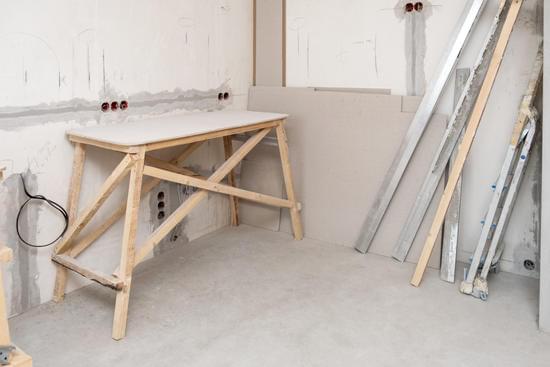Home theaters have become increasingly popular in recent years, with many homeowners seeking to create the ultimate entertainment experience within the comfort of their own homes. A well-designed home theater is more than just a room with a big screen and some speakers; it is a carefully planned space that aims to replicate the immersive feeling of being in an actual movie theater.
In this article, we will explore various ways to improve your home theater and enhance the overall viewing experience.
In order to improve your home theater, it is essential to first assess your current setup and identify any weaknesses or potential areas for improvement. This includes taking a closer look at your audio system, picture quality, sound environment, seating options, smart home integration, lighting solutions, cable management, and fine-tuning/ calibration. By addressing each of these components and making necessary adjustments or upgrades, you can significantly elevate your home theater experience.
One key aspect of improving your home theater is choosing the right audio system. Surround sound is often preferred for its ability to provide a more immersive audio experience. Additionally, proper speaker placement can greatly impact sound quality by optimizing distribution throughout the room.
Alongside audio enhancements, enhancing picture quality is another crucial consideration. Whether you choose a projector or TV for your setup, selecting one that offers high-resolution display capabilities and supports HDR (High Dynamic Range) technology can result in a more vivid and lifelike viewing experience.
Assessing Your Current Setup
One of the first steps in improving your home theater experience is to assess your current setup and identify any weaknesses or areas that could be improved. This will help you determine where to focus your efforts and make informed decisions about upgrades or changes.
Check Your Audio System
Begin by evaluating your audio system. Consider factors such as sound quality, speaker placement, and compatibility with different media sources. Are you satisfied with the sound quality? Does the audio system provide a surround sound experience? If not, consider upgrading to a surround sound system for a more immersive audio experience. Additionally, ensure that your speakers are positioned correctly for optimal sound distribution throughout the room.
Evaluate Your Viewing Equipment
Next, take a close look at your projector or TV. Is the picture quality satisfactory? If not, it may be time to upgrade to a higher resolution display or one with better color accuracy and contrast. For those using projectors, consider investing in a screen designed specifically for home theater use as it can enhance image quality and reduce ambient light interference.
Consider Room Acoustics
The acoustics of your home theater room can greatly impact the audio performance. Assess whether there are any acoustic issues such as echoes or reverberations that could be affecting the sound quality. You may want to invest in acoustic treatments such as wall panels, bass traps, or diffusers to improve sound absorption and diffusion within the room. Additionally, consider implementing soundproofing techniques to minimize external noise interference.
By thoroughly evaluating your current setup in terms of audio, video, and room acoustics, you can identify weaknesses and potential areas for improvement in your home theater system. This will allow you to make informed decisions when selecting new equipment or making adjustments to enhance your overall viewing and listening experience.
Choosing the Right Audio System
When it comes to creating the ultimate home theater experience, choosing the right audio system is crucial. The sound quality can greatly enhance the immersion and overall enjoyment of watching movies or listening to music in your home theater. This section will explore the advantages of surround sound and better speaker placement, providing you with the knowledge to make informed decisions for your setup.
The Advantages of Surround Sound
One of the most significant advantages of surround sound is its ability to create a more realistic and immersive audio experience. Unlike traditional stereo speakers that provide sound from just two directions (left and right), surround sound systems incorporate multiple speakers placed strategically around the room to produce a three-dimensional audio effect. This allows you to hear sounds coming from different directions, just like in a real-life environment.
Surround sound also adds depth and clarity to movie soundtracks, bringing out details that may have gone unnoticed before. By accurately reproducing different audio channels, such as dialogue, effects, and ambient noise, you can truly feel like you’re part of the on-screen action. Whether it’s hearing footsteps approaching from behind or feeling the rumble of an explosion all around you, surround sound takes your home theater experience to another level.
Better Speaker Placement for Optimal Performance
In addition to investing in a surround sound system, proper speaker placement is essential for achieving optimal performance. Each speaker should be strategically positioned to ensure balanced audio dispersion throughout the room. Here are a few tips:
- Start with your center channel speaker: This speaker plays a critical role in reproducing dialogue and should be placed directly above or below your screen at ear level.
- Position your front left and right speakers at equal distances from where you typically sit: Ideally, they should be angled slightly towards your seating area for an immersive listening experience.
- Place surround speakers at ear level or slightly above: These speakers should be positioned on the sides or just behind your seating area to envelop you in sound.
- Consider adding overhead or ceiling speakers for Dolby Atmos: This advanced audio format adds height to the soundstage, creating a truly captivating experience with audio that seems to come from above.
By following these guidelines and experimenting with speaker placement, you can fine-tune the audio performance of your home theater system and ensure every seat in the room receives an optimal listening experience.
Enhancing Picture Quality
When it comes to enhancing the picture quality of your home theater, choosing the right projector or TV is crucial for creating an immersive viewing experience. Here are some key factors to consider when making this important decision:
- Resolution: The resolution of your display determines the clarity and detail of the images you will see on the screen. Higher resolutions such as 4K or even 8K offer sharper and more defined images, but they also come at a higher price. Standard high-definition (HD) displays might still offer a satisfactory experience for most viewers.
- Screen Size: The size of your projector screen or TV will impact how immersive your viewing experience is. Ideally, you want a screen that is large enough to fill your field of vision without causing discomfort or straining your eyes. Consider the size of your room and how far you will be sitting from the screen when determining the appropriate size.
- Display Technology: There are several display technologies available, each with its own strengths and weaknesses. LCD and LED screens are commonly found in TVs and provide vibrant colors and high brightness levels. OLED displays offer deep blacks and excellent contrast ratios for a more cinematic experience. On the other hand, projectors use various technologies such as DLP or LCoS to project images onto a screen.
To enhance picture quality further, it’s important to consider other factors such as color accuracy, contrast ratio, and HDR compatibility when making your decision. Additionally, calibration is essential to ensure that these settings are optimized for your specific environment.
Remember that finding the perfect projector or TV for your home theater is subjective, as personal preferences may differ. It is recommended to do thorough research, read reviews, and if possible, visit showrooms to see how different models perform in person before making a final decision. Ultimately, choosing a display that meets your requirements in terms of resolution, size, and technology will greatly contribute to an enhanced viewing experience in your home theater.
Creating the Perfect Sound Environment
When it comes to creating the perfect home theater experience, sound is just as important as the visual component. To achieve optimal audio performance, it is crucial to create a sound environment that minimizes external noise and maximizes the quality of sound produced by your audio system. This can be achieved through acoustic treatments and soundproofing techniques.
One of the first steps in creating a perfect sound environment is assessing any existing weaknesses in your current setup. Identify any areas where external noise may be seeping into your theater room, such as windows or doors that are not properly sealed. Additionally, evaluate the acoustics within the room itself – are there any hard surfaces that may cause reflections or echoes? Once you have identified these weaknesses, you can begin implementing acoustic treatments.
Acoustic treatments encompass a range of solutions designed to improve the sound quality within a space. One common treatment option is installing sound-absorbing panels on walls and ceilings. These panels help minimize reflections and echoes, resulting in clearer and more accurate audio reproduction.
Bass traps can also be used in corners of the room to reduce low-frequency buildup. Furthermore, diffusers can be added to scatter sound waves and create a more immersive listening experience. By strategically placing these treatments throughout your theater room, you can optimize audio performance for all listeners.
In addition to acoustic treatments, soundproofing techniques should also be considered to achieve better isolation from external noise sources. Soundproofing materials such as mass loaded vinyl (MLV), acoustic foam insulation, and weatherstripping can help minimize noise leakage from walls, floors, and doors.
Installing double-glazed windows or adding heavy curtains can also contribute to reducing outside noise interference. By incorporating these soundproofing techniques into your home theater design, you can create an ideal environment where you can fully immerse yourself in the movie or show without any distractions.
Maximizing Comfort
Comfort is a crucial aspect of creating the perfect home theater experience. After all, what good is a high-quality audiovisual setup if you can’t enjoy it in comfort? In this section, we will explore some tips for selecting the right seating options and finding the optimal viewing distance for your home theater.
Firstly, consider the seating options available to you. It’s important to have comfortable seating that supports good posture during long periods of sitting. Look for options that provide adequate lumbar support and cushioning. Reclining chairs or sofas can enhance comfort by allowing you to adjust your sitting position according to your preference.
Additionally, consider the number of seats needed based on the size of your home theater and your typical audience size. If you often entertain guests, larger seating options such as sectional sofas or loveseats may be more suitable. On the other hand, if it’s primarily just you or a small group who will be using the space, individual recliners or bean bags could be considered for a more personalized experience.
Next, determining the optimal viewing distance is crucial for an immersive viewing experience. Sitting too close to the screen can result in discomfort and eye strain, while sitting too far away can dilute the impact of visuals and sound. As a general rule of thumb, experts recommend that viewers sit at a distance equal to 1.5-2 times the diagonal screen size for HD content and 1-1.5 times for 4K Ultra HD content.
Consider arranging your seating in tiers or rows if you have ample space. This arrangement not only adds depth to your home theater but also allows everyone in each row to have an unobstructed view of the screen.
Incorporating Smart Home Integration
With the rise of smart home technology, incorporating smart home integration into your home theater system can greatly enhance your overall experience. In this section, we will explore the benefits of connected home theater systems and voice control.
The Benefits of Connected Home Theater Systems
One major advantage of a connected home theater system is seamless integration with other smart devices in your home. This allows you to control various aspects of your theater system, such as audio, video, lighting, and temperature, all from one centralized hub or through a mobile app.
With just a few taps on your smartphone or by using voice commands, you can create customized scenes and presets for different viewing scenarios. For example, you can dim the lights, lower the blinds, turn on the projector or TV, and start playing your favorite movie – all with a single command.
Connected home theater systems also offer convenience and flexibility in terms of content streaming. With services like Netflix, Hulu, Amazon Prime Video, and more available at your fingertips, you can easily access a wide range of movies and TV shows without having to switch between devices or input sources. Many smart TVs and media players even have built-in voice assistants like Amazon Alexa or Google Assistant for hands-free control.
The Power of Voice Control
Another significant benefit of incorporating smart home integration into your home theater system is the power of voice control. Voice assistants like Amazon Alexa or Google Assistant allow you to operate various functions simply by speaking commands aloud. From adjusting volume levels to changing inputs or even searching for specific content – it can all be done without lifting a finger.
Not only does voice control eliminate the need for multiple remote controls or navigating complex menu systems, but it also adds an extra layer of accessibility for those with mobility limitations or disabilities. It simplifies operation and makes the entire experience more user-friendly for everyone in the household.
Smart Lighting and Ambiance
Lighting plays a crucial role in setting the mood and enhancing the overall viewing experience in a home theater. By carefully considering lighting solutions, homeowners can create an immersive atmosphere that complements their entertainment activities. Smart lighting systems are particularly advantageous in this regard, as they offer convenience, flexibility, and control over lighting options.
One of the key benefits of smart lighting is its ability to create different lighting scenes or presets that can be easily adjusted depending on the desired ambiance. These scenes can be programmed to dim or brighten specific lights, change color temperatures, or even synchronize with the content being viewed on screen.
For example, during movie nights, users can set a “Cinema Mode” that automatically dims all lights except for accent lights behind the screen to minimize distractions and enhance focus on the movie.
Another advantage of smart lighting is its integration with voice control and home automation systems. With voice commands or pre-set schedules, homeowners can effortlessly adjust and control their lights without having to get up from their seats or use physical switches. This level of automation not only enhances convenience but also contributes to a seamless and immersive viewing experience.
When choosing smart lighting for a home theater, it is important to consider factors such as color temperature and intensity. Warm white lights with a lower color temperature (around 2700K) are recommended over cooler white lights (around 5000K) as they create a more cozy and inviting atmosphere. Additionally, adjustable intensity levels allow users to fine-tune their lighting preferences based on personal preference or specific content being viewed.
In summary, smart lighting offers various benefits for improving home theaters. By creating customizable lighting scenes and integrating with other smart technologies, homeowners can set the perfect ambiance for an optimal viewing experience. Whether it’s dimming the lights during movies or adding dynamic background lighting for gaming sessions, smart lighting solutions provide flexibility, convenience, and an overall heightened sense of immersion.
Managing Cable Clutter
With the advancement of technology, home theaters are now equipped with a variety of devices such as projectors, televisions, sound systems, gaming consoles, and streaming devices. While these devices enhance the audio and visual experience, they also come with a common challenge – cable clutter. Managing cable clutter is crucial not only for aesthetic purposes but also for safety and functionality.
One practical solution for organizing and concealing wires and cables is to use cable management products such as cable raceways, cable clips, or cable sleeves. Cable raceways are plastic or metal channels that can be mounted on the wall to hide cables and wires. They come in different sizes and shapes to accommodate various types of cables.
Cable clips are small adhesive or screw-mounted holders that can be used to secure cables along walls or furniture legs. Cable sleeves are flexible fabric tubes that can bundle multiple cables together, keeping them neat and organized.
Another useful solution for managing cable clutter is to utilize wireless technology whenever possible. Look for wireless options for speakers, gaming consoles, streaming devices, and other audiovisual equipment. For example, wireless speaker systems eliminate the need for speaker wires running across the room. Similarly, streaming devices like Apple TV or Roku allow you to transmit content wirelessly from your mobile device or computer to your television.
Lastly, consider using furniture with built-in cable management features. Many entertainment centers or TV stands come with built-in wire management solutions such as hidden compartments or holes in the back panel for routing cables. These furniture pieces provide a tidy and organized look while ensuring that cables remain hidden from view.
In summary, managing cable clutter in a home theater is essential for both functionality and aesthetics. Using cable management products, opting for wireless options when available, and selecting furniture with built-in wire management features can help achieve a clean and organized setup. By implementing these practical solutions, you can enjoy an improved home theater experience without the hassle of tangled wires and visible cables.
| Cable Management Product | Advantages |
|---|---|
| Cable Raceways | Hides cables and wires by mounting them on the wall. Comes in different sizes and shapes. |
| Cable Clips | Holds cables along walls or furniture legs, keeping them secure and organized. |
| Cable Sleeves | Bundles multiple cables together, maintaining a neat appearance. |
Fine-tuning and Calibration
In order to achieve the ultimate home theater experience, it is crucial to fine-tune and calibrate your audio and video settings. This process ensures that you are getting the best possible sound and picture quality from your home theater system. By properly adjusting these settings, you can optimize the performance of your equipment and create a more immersive viewing experience.
When it comes to audio, calibration is essential for achieving balanced sound throughout your home theater. This involves setting the correct levels for each speaker in your surround sound system, as well as adjusting the tone controls to ensure optimal audio quality.
Many AV receivers come with built-in calibration tools that use a microphone to analyze the acoustic properties of your room and automatically adjust the settings accordingly. However, manual calibration can also be effective if you have a keen ear for audio nuances.
When calibrating video, it is important to consider factors such as color accuracy, brightness, contrast, and sharpness. One recommended method for video calibration is using test patterns or discs that are specifically designed for this purpose. These patterns allow you to adjust settings like white balance and gamma correction to achieve accurate colors and contrast levels. Additionally, some TVs come with built-in picture adjustment features that can assist in this process.
In order to maintain an optimal home theater experience over time, it is necessary to regularly recalibrate your audio and video settings. Factors like changes in room conditions or equipment age can affect the performance of your system. By periodically checking and readjusting these settings, you can ensure that you are always getting the best possible audio and visual experience from your home theater.
Overall, proper tuning and calibration of audio and video settings play a vital role in achieving an optimal home theater experience. By taking the time to fine-tune these settings, you can enhance both the sound quality and visual presentation of your home theater system. Whether using automated calibration tools or manually adjusting settings, the effort put into calibration is sure to pay off in a more immersive and satisfying viewing experience.
| Audio Calibration | Video Calibration |
|---|---|
| – Set correct levels for each speaker in surround sound system | – Use test patterns or discs for accurate color and contrast adjustment |
| – Adjust tone controls for balanced sound | – Consider factors like brightness, sharpness, and white balance |
| – Utilize built-in calibration tools or manual calibration methods | – Some TVs come with picture adjustment features that aid in calibration |
Conclusion
In conclusion, achieving an improved home theater experience requires careful consideration of various factors. By assessing your current setup and identifying weaknesses, you can easily identify potential areas for improvement. Choosing the right audio system, such as surround sound and proper speaker placement, will significantly enhance the quality of your audio experience. Moreover, selecting the perfect projector or TV will help create a truly immersive viewing experience.
Creating the perfect sound environment through acoustic treatments and soundproofing techniques is essential for optimal audio performance. Additionally, maximizing comfort by selecting the right seating options and optimal viewing distance ensures that you can fully relax and enjoy your home theater experience. Incorporating smart home integration offers a range of benefits, including connected systems and voice control that enhance convenience.
To further enhance the overall ambiance, implementing smart lighting solutions can set the mood and elevate the viewing experience. Managing cable clutter with practical solutions for organizing and concealing wires will also contribute to a clean and clutter-free home theater space. Lastly, fine-tuning and calibrating both audio and video settings are crucial to attaining an optimal home theater experience.
By following these key tips and recommendations outlined throughout this article, you can transform your home theater into an ultimate entertainment hub. With improved sound quality, picture clarity, comfortable seating, integrated smart features, appealing lighting solutions, organized cable management, and properly adjusted audio-video settings, you can create a truly immersive cinematic experience within the comfort of your own home. So get started on enhancing your home theater today and enjoy countless hours of amazing entertainment right at your fingertips.
Frequently Asked Questions
How can I make my home theater sound better?
To make your home theater sound better, there are several steps you can take. Start by investing in a high-quality audio system or soundbar specifically designed for home theaters. Look for speakers with good frequency response and power output to ensure immersive sound.
Proper speaker placement is also crucial, so consider positioning them strategically around the room for optimal sound distribution. Additionally, room acoustics play a vital role, so you may want to add acoustic panels or curtains to minimize reflections and echoes. Lastly, adjust the audio settings on your equipment according to your personal preferences and the content you’re watching, utilizing features such as equalizers and surround sound modes.
What should I upgrade my home theater?
When it comes to upgrading your home theater, there are several components worth considering. First and foremost, evaluate your display technology. If you still have an older television or projector, upgrading to a newer model with higher resolution (such as 4K or even 8K) can greatly enhance your viewing experience.
Next, consider upgrading your audio system by investing in high-quality speakers or a subwoofer for richer and more impactful sound reproduction. Upgrading your media player or streaming device can also improve functionality and access to various entertainment options. Additionally, upgrading your seating arrangement with comfortable chairs or even a dedicated home theater recliner can further enhance the overall enjoyment of your setup.
How can I improve my home movie experience?
Improving your home movie experience involves attention to both visual and auditory aspects. Starting with visuals, ensure that you have a screen or display that is adequately sized for the room; aim for one that provides an immersive experience without straining viewers’ eyes by being too large or too small. Consider optimizing the lighting conditions by installing dimmable lights or blackout curtains to create a more cinematic ambiance when needed.
Furthermore, it’s essential to select high-quality video sources such as Blu-ray players or streaming devices capable of high-definition playback. For audio improvement, following the suggestions in question one will contribute to a more immersive experience. Additionally, consider investing in comfortable seating, installing soundproofing measures to minimize external noise, and creating a cozy atmosphere with soft furnishings and decor elements that recreate the feeling of a cinema.

I’m thrilled to have you here as a part of the Remodeling Top community. This is where my journey as an architect and remodeling enthusiast intersects with your passion for transforming houses into dream homes.





